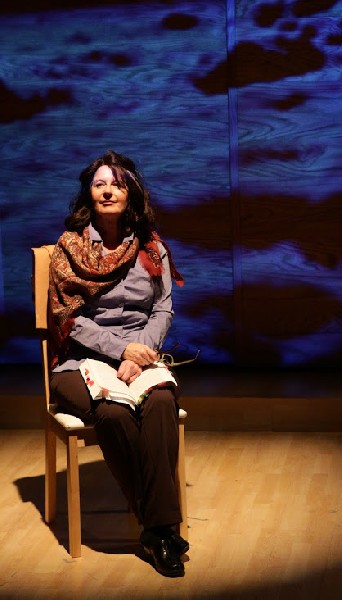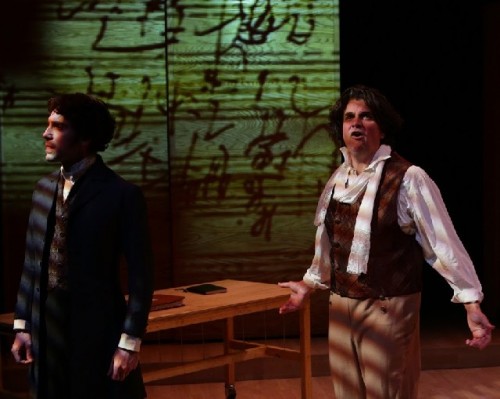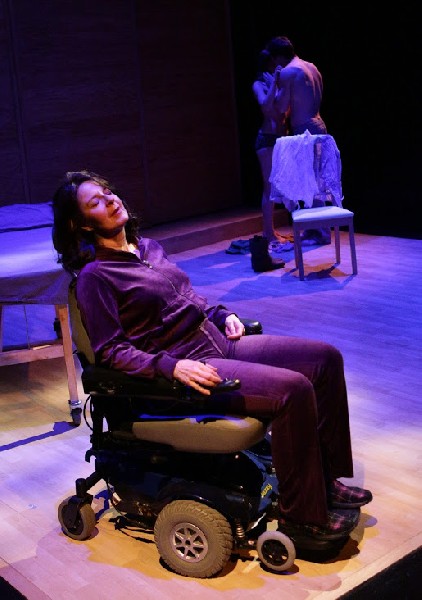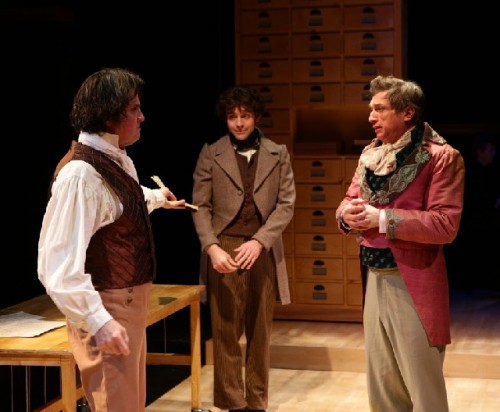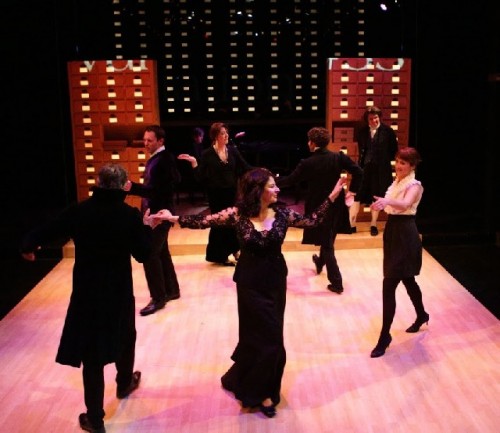33 Variations At Lyric Stage
Spanning Obsessions, 200 Years And Painful Lives
By: Mark Favermann - Jan 06, 2013
33 Variations
Creative Team
Written By Moises Kaufman
Directed by Spiro Veloudos
Scenic Design, Cristina Todesco
Costume Design, Charles Schoonmaker
Lighting Design, Karen Perlow
Sound Design, Brendan Doyle
Projections Design, Shawn Boyle
Production Stage Manager, Maureen Lane
Featured Players
Paula Plum (Dr. Katherine Brandt)
Dakota Shepard (Clara Brandt)
Kelby T. Akin (Mike Clark)
James Andreassi (Ludwig van Beethoven)
Will McGarrahan (Anton Diabelli)
Maureen Keiller (Dr. Gertrude Ladenburger)
Victor L. Shopov (Anton Schindler)
Catherine Stornetta (Pianist)
January 4 – February 2, 2013
Wednesdays, Thursdays – 7:30pm
Wednesday matinees – 2pm, January 9 & 30
Fridays – 8pm, Saturdays – 3pm & 8pm, Sundays – 3pm
Post-show talkbacks: Sundays, January 6 & 20 after 3pm performance
VIP opening: Wednesday, January 9, 7:30pm (post-show reception with cast and crew — open to all ticket holders)
The Lyric Stage, 140 Clarendon Street, Copley Square, Boston, MA 02116
TICKETS: $25 - $58, Seniors – $5 off regular price, Student rush – $10, Group rates available.
Box Office: 617-585-5678
website: lyricstage.com
Written by Moises Kaufman and sensitively directed by Spiro Veloudos, 33 Variations, now playing at the LyricStage Company, simultaneously examines the creative process behind Beethoven's Diabelli Variations and a dying musicologist's end of life painful personal journey.
Taking place in the present as well as in the early part of the 19th Century, the obsessive musical scholar, Katherine Brandt (played by Paula Plum), not only researches Beethoven's problemmatic creative obsession with a mediocre waltz but wrestles with her relationship with her daughter while deteriorating from ALS (aka Lou Gerhig's Disease). This is also in parallel to Beethoven's creative and personal hubris, financial woes and growing deafness.
Demonstrating that music and life are both filled with high and low notes, the narrative action switches back and forth between the researcher and the creative genius and their cohorts. Here, actions separated by 200 years are not so far apart.
At certain well-choreographed points, characters from both time periods are on stage to deliver lines simultaneously, emphasizing the parallels between both sets of characters. Spiro Veloudos' direction is elegant and graceful. This is a verbal dance of musical obsession and a dance of painful end of life.
The minimal sets by scenic designer Cristina Todesco and the projections by Shawn Boyle give atmosphere and imagery to the production. The costumes by Charles Schoonmaker, lighting design by Karen Perlow and sound design by Brendan Doyle all work in visual harmony with the sets and the narrative.
Grandly musicaly puntuating the play, Catherine Stornetta, the production's pianist is simply brilliant. Her renditions of the 33 Variations would have pleased even Beethoven.
For the most part, the acting in this production is strong. Notable are Paula Plum's self-contained, unlikable but empathetic Dr.Katherine Brandt, James Andreassi's arrogant, angry but creative Beethoven and Maureen Keiller's only-by-the-rules but with a heart of gold very German Dr. Gertrude Ladenburger. Other performances are either less authentic or generically or superficially written.
Speaking of the writing, there are many apparent storyline flaws. The awkward, bad relationship theme between Dr. Brandt and her daughter is too pat. What else is new between mothers and daughters? The disapproval by her mother of the male nurse as a partner for daughter Clara is far too expected as well.
Anton Shindler's relationship to Beethoven seems one-dimensional. With no nuance, no grey scale, the connection between the genius and the business manager seems to be drawn unconvincingly. Though he calls himself a friend of Beethoven, the affiliation seems without bonding, one-sided and needlessly unclear.
On the positive side, Playwright Kaufman's point is to demonstrate obsessional as well as extremely energized goal behavior are similar in both musical or artistic genius and academic scholarship. He strategically accomplishes this through the telling of the story.
Rhythmical, methodical steps lead to accomplishment, sometimes brilliant accomplishment. Storyline parallels and coincidences are interwoven. Like a dance, the characters' movements and individual steps follow and form the performance.
Well worth seeing, this 33 Variations is an entertaining and intellectually as well as emotionally provocative production. In Mr. Veloudos' deft hand, it is an elegant musical and verbal journey that describes life, death, pain, suffering, redemption and triumph.

